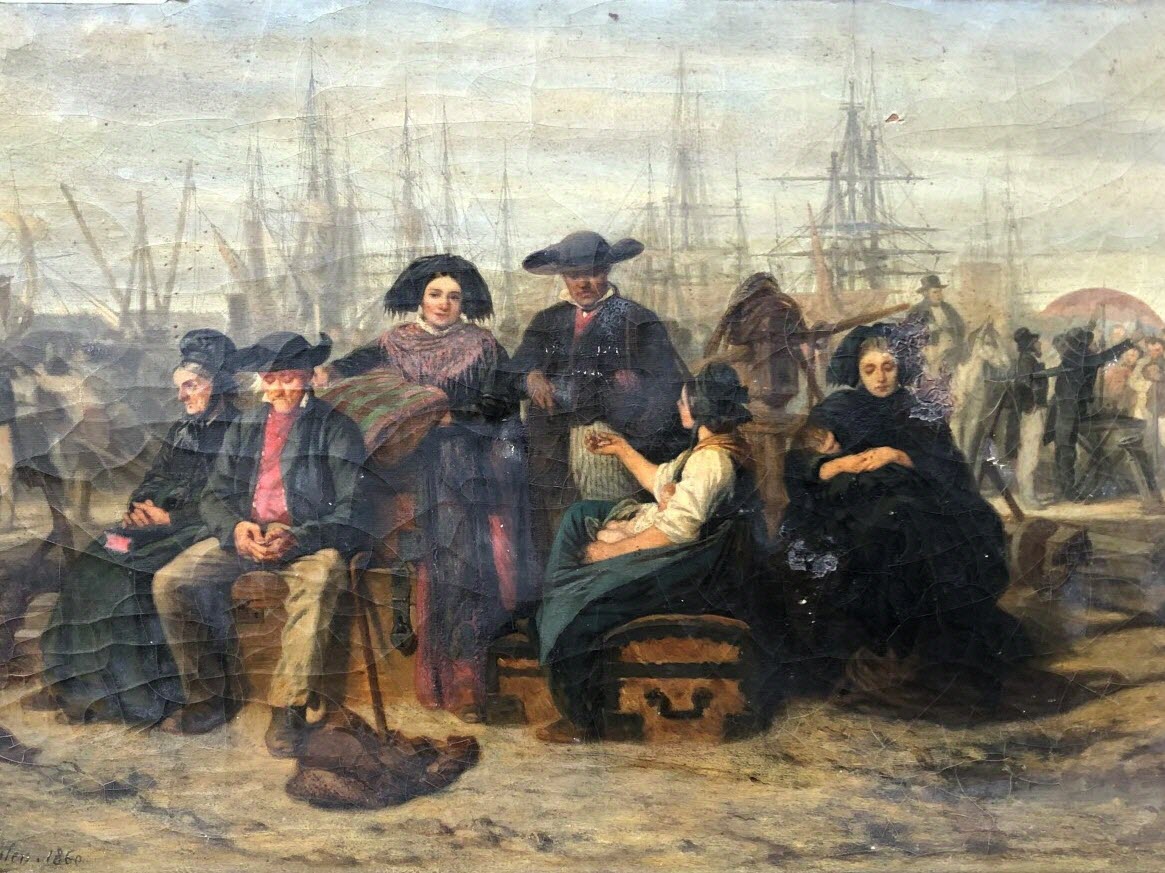The Original Nationality of Alsatians Who Emigrated to the USA – part 1
I’ve noticed for a long time now, while browsing forums and talking to my customers, that when people try to find the place of origin of their Alsatian ancestor, their main piece of information is that he/she came from Germany or was of German nationality. This information leads to numerous errors and confusion, and can even block research. In this series of articles, I will provide some explanations on this subject.
When Alsatians emigrated to the United States, they were often perceived as Germans. This identity confusion stemmed from a combination of historical, cultural, linguistic, and administrative factors. Alsace, a border region between France and Germany, has long oscillated between these two nations. The annexation of Alsace by Germany after the Franco-Prussian War of 1870-1871 particularly reinforced this confusion. During this period, a large number of Alsatians emigrated to the U.S. with the image of a Germanic region embedded in their identity.

Alsatians Trying Their Luck In America – painting from Théophile Schuler
Language played a major role in this perception. In Alsace, Alsatian, a Germanic dialect, was the primary language spoken by most of the population. This dialect reinforced the notion that Alsatians belonged to German culture, especially after 1871, when standard German became the official administrative language. To Americans, immigrants speaking a German dialect were easily categorized as Germans, without regard to regional distinctions.
Alsatian customs, influenced by German culture, also added to this confusion. For example, Alsatian cuisine, with dishes like “choucroute” (sauerkraut) or “kouglof” (a type of briche), was often associated with German cuisine. Additionally, traditional Alsatian clothing, such as the iconic black headdresses worn by women or the folkloric costumes of men, bore similarities to certain German attire, further strengthening the association with Germany. Folk dances and music were also integral to Alsatian identity, with instruments like the accordion and festive tunes accompanying local celebrations, reflecting a shared heritage with Germany. To outside observers, these cultural traditions, so close to those of neighboring regions, heightened the confusion between Alsatians and Germans.
Religion was another factor that blurred the lines between Alsatians and Germans. In Northern Alsace, Protestantism, particularly the Lutheran denomination, was widespread, much like in Germany. This religious similarity further solidified the view of Alsatians as Germans in the eyes of American authorities and other immigrants.
Alsatian surnames, often of Germanic origin, contributed to the confusion as well. Family names like “Schneider,” “Müller,” or “Klein” were common in Alsace, but their Germanic sound directly linked them to German culture. In the United States, where surnames often served as markers of an immigrant’s origin, these names reinforced the idea that Alsatians were “Germans” in the eyes of authorities and the broader population.
Alsace’s history, particularly its long-standing membership in the Holy Roman Empire, also played a key role in this confusion. For several centuries, Alsace was part of this empire before being incorporated into France in 1648 after the Treaty of Westphalia. Despite becoming French, the region retained many aspects of its Germanic culture. This historical legacy fueled the perception that Alsace was more German than French, even after its integration into France.
I’ve just developed an initial list of possible reasons for this confusion. There are others, which I’ll present in a later article. To be continued…


Plummer?
The PLUMMER and PLUMER surnames are mainly found in Moselle, Lorraine. Which period is concerned?
Claude